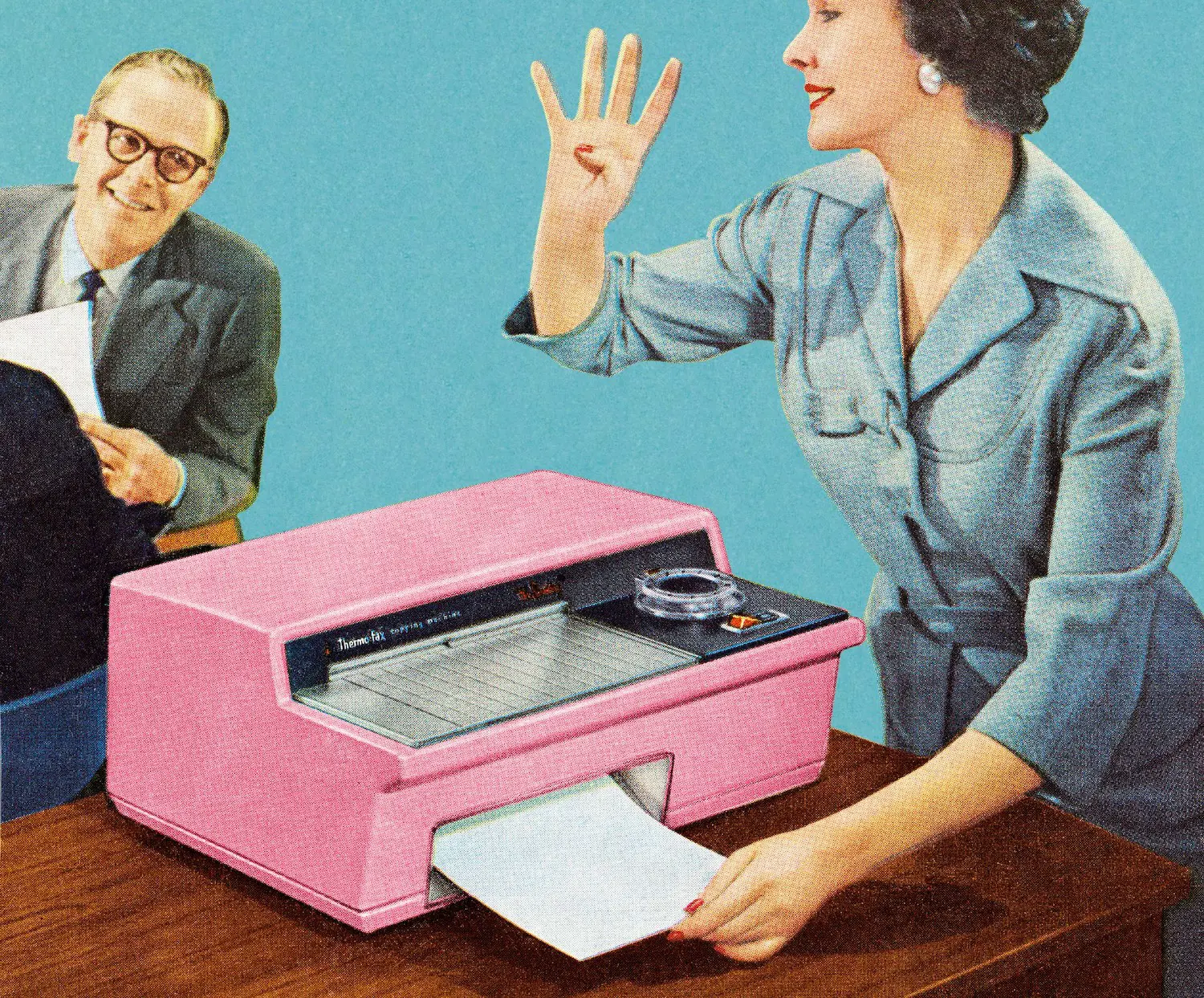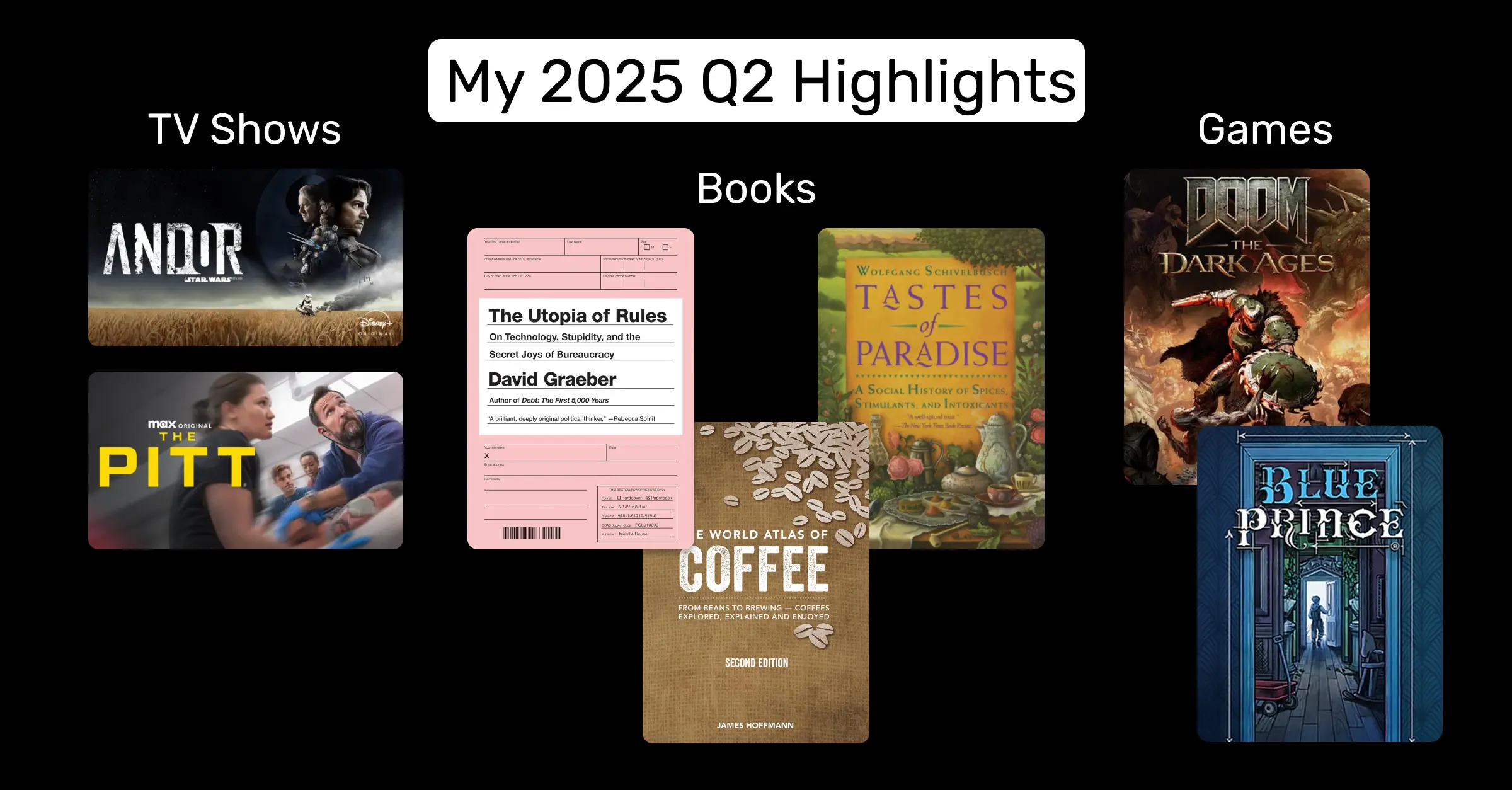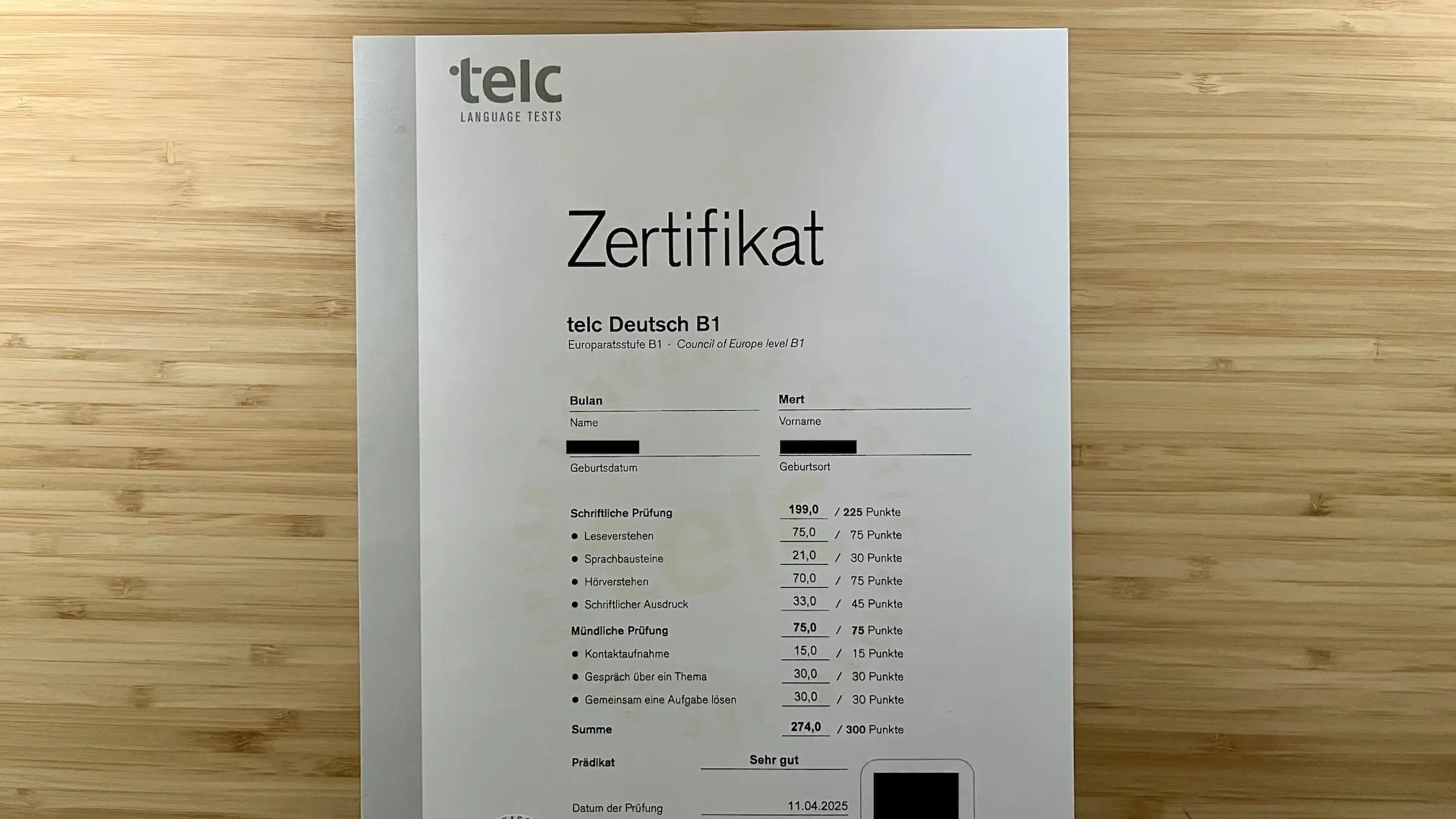I’ve been living in Germany for seven years. During that time, I’ve gone through many bureaucratic processes — from getting my Blue Card to setting up a sole proprietorship (Einzelunternehmen). I’ve also changed jobs a few times and was unemployed for a short while.
If you search online, you’ll find a lot of jokes about Germany still using fax machines and how the country is behind when it comes to digital systems. In this post, I want to share my personal experience with how digital or non-digital things really are.
First of all, I’ve never had to use a fax machine. I’m not sure where that stereotype still comes from, but I also don’t know anyone who has actually used one here.
Let’s look at some specific examples so you can get a better idea of how the bureaucracy works in practice. Just keep in mind, this is based on my experience living in Hamburg. Things might be different in other parts of Germany, so don’t treat this as the full picture.
Digitalized Processes
Visa
Over the past seven years, I’ve gone through several visa-related processes in Germany. I first applied for a Blue Card, later renewed it because I got a new passport, and eventually applied for permanent residency. All of these steps were handled digitally.
I booked my appointments through the official Hamburg state portal and uploaded all the required documents as PDFs. When it was time for the appointment, I just brought the original documents so the officer could verify them in person. After the process was complete, I got a letter letting me know my ID was ready. I booked another appointment online to pick it up — and that was it.
As for the supporting documents, like proof of health insurance or pension contributions, I was able to get all of them from the websites of the relevant providers. For example, when applying for permanent residency, you need to show your pension payment history. To do this, you can log in to the official portal using your Blue Card.
Here’s how it works: You open the AusweisApp on both your computer and smartphone. Then you connect the devices, hold your Blue Card on your phone to scan the NFC chip, enter your password, and log in. Once you’re authenticated, you can download your pension history — and this system works across many government websites.
Honestly, I find this system quite impressive. It’s secure, straightforward, and works well (at least in my experience).
Work
When it comes to work, most companies in Germany now allow you to sign your contract digitally — using tools like DocuSign, for example. That said, some employers still ask for a physical (wet) signature, even if you’ve already signed it digitally, just to be on the safe side.
However, when it comes to resigning, things are less flexible. You always need to hand in a signed resignation letter, and digital signatures are not accepted for some reason. It has to be on paper, with your actual signature.
When I started my first job in Germany seven years ago, I used to receive my payslips by post every month. Any promotion or salary change also came with physical documents. Over time, this process has become more digital. Many companies have stopped sending paper payslips and now use platforms like Workday, Personio, or DATEV to share payslips and other HR documents in PDF format.
Starting a Company
If you have permanent residency in Germany, you’re allowed to start your own company. I wanted to do that because I develop apps and earn income from them.
Starting a sole proprietorship (Einzelunternehmen) was actually quite simple. I went to the website of the responsible office and filled out an online form. After that, I used a third-party accounting service to submit another form to the Finanzamt (tax office) to get a new tax ID. I think you can also do this through Elster, but I didn’t take the time to figure it out.
The biggest downside was the waiting time. If I remember correctly, it took around six months to get the official confirmation that my company had been registered. But honestly, this wasn’t a huge issue because I received my tax ID after just a couple of weeks. That was the important part — it allowed me to start selling apps right away.
Like most bureaucratic processes in Germany, I got several letters in the mail confirming different steps along the way.
Taxes
When it comes to taxes in Germany, if you’re working full-time as an employee, you usually submit your tax forms the following year. Your employer will send you a document that shows how much you earned and how much tax you paid. You can then use Elster to submit your tax return. The cool part is that you can authenticate yourself through the NFC chip in your ID card to log in to Elster.
The good thing about Elster is that the information your employer sent you is already loaded into the system. You don’t have to manually enter the numbers. You can just use what’s already been submitted. This also applies if you paid for health insurance out of pocket during a gap between jobs, or if you received unemployment benefits. You can see all these documents directly in Elster.
However, the worst part of Elster is definitely the user interface. Since Elster is available to everyone, and taxes are complicated, the forms can be super overwhelming. If your German isn’t great, it’s almost impossible to navigate and figure out where to put certain numbers. If you’re just submitting the standard information from your employer, it’s not so bad. But if you want to deduct some expenses for tax returns, report investments, or account for freelance work, it gets really tricky to figure out.
Because of this complexity, there are several third-party services that help with filling out tax forms, like SteuerGO or Taxfix. For the first few years, I used SteuerGO to handle my taxes, but in the last couple of years, I decided to switch to Elster, even though my forms got more complicated due to my sole proprietorship. I wanted to learn the entire process because I’ll need to submit tax returns every year for the rest of my life, and I didn’t want to rely on a third-party service forever. Plus, those services charge around €30, while Elster is free.
I really hope that one day the Finanzamt realizes how difficult Elster is to use and improves the user experience. Once you’ve submitted your tax forms, you’ll receive a letter from the Finanzamt that tells you how much you owe or how much you’ll be refunded.
Letters
So far, I’ve mentioned quite a few letters. If you live in Germany, you’ll definitely need a folder to keep track of all the letters you’ll receive. From my understanding, letters are still the preferred method of communication because it’s the most reliable way to ensure you receive important information. The alternative would be using emails, but then there’s the issue of needing some form of tracking to confirm that the person opened the email. Plus, emails aren’t encrypted, so there’s a privacy concern as well.
At some point, maybe the government will introduce a system to replace physical letters. Some government offices already offer digital-only communication options, meaning you can choose to receive only emails and not letters. But if you miss something, it’s on you. In these systems, you’d get an email notifying you of a new message, and then you’d need to visit the official website to view the content of the message.
Dealing with all these letters can be overwhelming, especially if you’re constantly checking your mailbox. That’s where Deutsche Post comes in with a free service that notifies you when a letter is on the way via the DHL app. I really appreciate this because I don’t have to check my postbox every day. You just register for the app, confirm your address with a letter, and from then on, you’ll get notifications whenever a letter is on the way. They even send you a scan of the letter, so you can see who it’s from before it arrives.
In most cases, you get the letter the same day or the next day. The app also notifies you when a package is on the way, which I find super useful. This service is one of the main reasons I always use DHL for my packages.
Health
A couple of years ago, when you got a sick note from your doctor, you’d receive three copies: one for your insurance, one for your employer, and one for yourself. You’d then submit the papers to your employer and health insurance. Some companies even allowed you to take a sick day or two without a note, so you didn’t have to deal with any paperwork. But in the last few years, this whole process has been completely digitalized. Now, when you get a sick note, the doctor submits it directly to both your employer and health insurance — no more paper handling.
The same goes for prescriptions. These were also digitalized recently. If your doctor gives you a prescription, you can simply go to the pharmacy and redeem it by showing your health insurance card. If you need a refill for medication you regularly take, you can usually just email your doctor to request it. There are also services where you can see a doctor via an online call, so many aspects of healthcare are now fully digital.
When it comes to payments, you typically don’t pay for most health services, but if you’re staying in a hospital after surgery, you’ll pay €10 per day. Once you’re discharged, you’ll get a letter for the payment. The same process applies to dental treatments — you get the service and then a letter for the payment.
There are a few issues I’ve noticed with the health services, though. One is the lack of a standard way to make appointments. Some doctors use services like Doctolib or Jameda to manage their appointments, while others have their own system, or some don’t use any online service at all. In those cases, you have to call them, which I personally dislike, especially when I have to do it in German. That’s why I always prefer doctors who offer a digital appointment system.
Another issue I’ve encountered is when you switch specialists. Your old doctor prints out a bunch of papers for your new doctor, who then scans those papers into their system. It’s a bit old-fashioned, but I believe this problem is being addressed through the introduction of digital health records (ePA). With this system, you won’t have to carry physical papers from one doctor to another.
Unemployment
During my 7 years, I also lost my job once and was unemployed for a while. I was really surprised by how digital the whole process was. I’ll write another blog post later about what to do if you lose your job in Germany, but for now, I can say that you do almost everything through the Agentur für Arbeit website.
You just sign up using your ID card, fill out some forms about your situation, and upload the letter your employer gave you about the job ending. Most of the time, you’ll need an appointment to speak with someone about your case, but you can also do that online if you prefer. Sometimes, you may need to send them a letter, but if you use your ID card, you can send it online by signing the document digitally. You can also choose to get all messages through the website instead of by mail, and they’ll send you an email when there’s something new.
When I told my German friends about this, they were also surprised at how digital it is. The website even has Passkey support now, which was another surprise for me. Through the Agentur für Arbeit site, you can tell them you’re unemployed and looking for a job, set up an appointment and have a video call, apply for benefits, send an appeal, get a confirmation that you’re unemployed, and later let them know when you’ve found a job. It’s all online, no need for paper.
Payments
When it comes to payments, you can use your card almost everywhere in Germany these days. Of course, there are still some places that don’t accept MasterCard or Visa — they only accept Girocard, which is a local payment system with lower fees. From what I’ve observed, most places offering cheaper products tend to avoid card payments, but this is probably true for only about 10% of the places.
If you need to make a payment at a government office, you’ll usually need either a Girocard or cash. I assume the reason for this is that they don’t want to pay commissions to MasterCard or Visa. One other common thing I’ve noticed is that many Döner shops don’t accept any cards at all, so keep that in mind.
For person-to-person payments, PayPal is still the most widely used method. If you’re selling something you no longer need, most people prefer paying through PayPal. Similarly, if you’re paying a friend for something, PayPal is usually the go-to option.
In the past few years, many supermarkets have introduced self-checkouts, where card payments are the only option. This is part of the shift towards cashless transactions. For public transportation, many people now use the Deutschlandticket, a subscription that lets you travel without limits. You can also buy tickets through a mobile app developed by the transportation company in your city. The cool part is that there are no card readers on buses or trains. Instead, there are random ticket checks to make sure you have a valid ticket. You can add your Deutschlandticket to Apple Wallet, for example, and just show the QR code on your Apple Watch during those checks.
Renting a Flat and Managing Utilities
When it comes to renting a flat in Germany, there’s one rule that keeps the process from being fully digital: you have to see the flat in person. Before that, though, you need to somehow secure an appointment for a viewing, which can be tricky due to the high demand and limited supply. In most cases, landlords post their ads on websites like ImmobilienScout24, and within minutes, they receive dozens of messages from interested tenants. These messages typically include basic information about the applicant, like their job, salary, and other personal details.
Once you secure a viewing, you’ll go to the flat, and if you’re interested, you’ll fill out a form with the same information you shared earlier to show your intent to rent. If the landlord chooses you, you’ll get the contract, which you’ll sign in person. So, while the process is mostly digital, the in-person viewing and signing remain essential steps.
After you’ve signed your contract, managing utilities is fairly simple and can be done entirely online. If you’re moving from another flat, you just inform your internet or electricity provider, and they’ll update your address in their system. This means no interruptions in service. If you want to cancel a utility contract, it used to be necessary to send a signed letter, but thanks to the Kündigungsbutton law, companies now have to provide a cancellation form directly on their websites. However, some providers try to hide this cancellation option by burying the link deep in their site or making it hard to find. Their goal is to get you to call them so they can try to convince you to stay.
In addition to utilities, phone contracts are also easily manageable and cancellable online. If you switch your phone number or bank account, you might need to verify your identity. In most cases, you can do this via a video call where you show your ID or by simply uploading a photo of your passport or ID through an app. No need to visit offices or send physical letters anymore.
Other stuff
There are probably some things I didn’t mention here because I haven’t needed to deal with them or just forgot. A friend of mine also mentioned that when you buy a second-hand car, you can handle everything digitally. I’m not a German citizen, but I know that for elections, you can either vote by mail or in person. However, when you vote in person, you still use paper ballots. For things like museums, concerts, and other events, you usually get a QR code for your ticket, and that’s all you need. You can also add it to your Apple Wallet sometimes. Gone are the days of printing tickets!
So, what’s the issue?
If you’ve made it this far, you might be wondering, “Germany seems fairly digital—so why do people still complain about bureaucracy or the lack of digitalization?” There are three key reasons for this, and they’re exactly why I wanted to write this post—because these issues often don’t get the attention they deserve.
1. What does “digitalization” actually mean?
One major problem lies in how digitalization is defined. Take this year’s elections in Hamburg, for example. When I tried to learn about the political parties’ platforms, I visited their websites. Instead of finding clear, digestible summaries, I was faced with 100-page PDF documents packed with dense policy details. Technically, yes, that’s digital—they’ve uploaded their programs online. But realistically, that’s not useful. A giant PDF isn’t reader-friendly. There are much better digital tools out there—web pages with interactive elements, infographics, or summaries that make information accessible.
So while something may be available online, that doesn’t necessarily mean it’s been digitized in a meaningful or user-friendly way. And that brings us to the deeper issues.
2. Poor integration between government offices
Even though many administrative processes are now online, you still have to collect and resubmit the same documents multiple times. For instance, if you hold a Blue Card and want to apply for permanent residency, you’ll need to provide your address registration (Anmeldung), pension history, and other records—again. Even if you’ve already submitted them elsewhere.
This redundancy slows everything down. In a truly digital system, government offices would be able to access the data that’s already on file, pulling your information automatically from connected databases. This wouldn’t just save you time—it would ease the burden on civil servants too, reducing manual work and room for error.
3. Long processing times
Even with online forms and uploads, many processes still move at a snail’s pace. A big part of the problem is staffing: there simply aren’t enough people working in government offices to handle the volume of requests. So even if you submit your documents digitally, you might still be waiting for months.
This is especially frustrating for critical applications like visas or residence permits—delays here can affect your ability to work, relocate, or make long-term plans. If agencies were digitally integrated and systems could communicate, that alone would speed things up significantly. There’s also potential for express services, where applicants pay extra for faster processing, which could help fund more staff and reduce overall wait times.
And when I say “long,” I don’t mean a few days or weeks. I’m talking about months, sometimes even years. I know people who waited six months just to get an appointment, and then another three months for their Blue Card to be issued. Citizenship applications are even worse—despite going digital recently, the process still requires collecting documents from different offices, facing repeated requests for more paperwork, and enduring radio silence for years on end. Some people have had to hire lawyers just to navigate the delays. In fact, over 1.000 people sued the immigration office in Berlin for its lack of action. As a result, the process has improved, and now, while naturalization still takes years in many cities, in Berlin, it can sometimes be completed in just a few weeks.
Like my previous blog posts, this one turned out to be pretty long, but I think I’ve made my point. Everywhere on the internet and in the news, you hear a lot about digitalization and bureaucracy. But I think these terms don’t really capture the real issue. What we should be talking about is the integration of government offices and reducing waiting times.
Government offices need to be held accountable for how long people have to wait, and they should be incentivized to speed things up. One idea is to share average waiting times on their websites, just like Deutsche Bahn does with train delays, and compare between the cities. That could give people a clearer picture and push for improvements.







